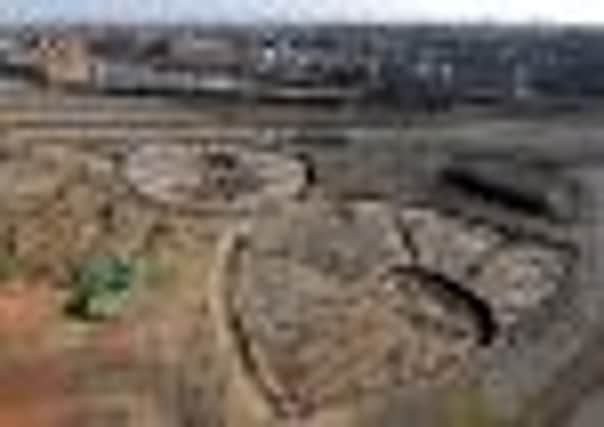Transported back to age of steam


But the foundations of a key site which was used to service steam locomotives in York as far back as the mid-19th century have now been uncovered.
While the actual structures were demolished amid Dr Beeching’s infamous cuts to the beleaguered rail service during the 1960s, the imprints of the buildings remain remarkably well-preserved.
Advertisement
Hide AdAdvertisement
Hide AdAnd the public are being given the chance to witness first hand the latest chapter in York’s long association with the rail industry during two open days to inspect the foundations of the so-called roundhouses.
The remains of the three buildings, which were once landmarks for rail passengers arriving and departing from York’s train station, have been uncovered during an archaeological dig to prepare the site for a major development.
Network Rail is planning to build a flagship facility on the land to control operations on the East Coast Main Line from London to the Scottish Borders.
Archaeologists involved in the excavations maintained that every effort will be made to preserve the foundations of the three roundhouses and a rectangular through shed.
Advertisement
Hide AdAdvertisement
Hide AdStructural engineers are drawing up plans for the new rail facility which attempts to ensure the remnants of the earlier buildings remain intact.
Phil Emery is an archaeologist from the engineering firm, Ramboll, who has been overseeing the excavations conducted by Durham-based PCA for Network Rail’s contractors, BAM Construction.
He said: “We were aware where the roundhouses would have once stood, but it is amazing how well the foundations have been preserved. They are a fascinating glimpse into the era of steam, and its subsequent decline.
“They would have been so well known to rail passengers arriving and departing York, but sadly all that is left now are the foundations.”
Advertisement
Hide AdAdvertisement
Hide AdThe roundhouses were built by York and North Midland Railway and then its successor, North Eastern Railway, to maintain steam engines as well as those of rival companies. The two earliest examples were designed by Thomas Cabry, who was the engineer-in-chief behind the adjoining roundhouses built in 1850 and 1852. The third structure was built in 1864 and designed by the renowned architect Thomas Prosser, who also designed York’s famous railway station.
The roundhouses were used during the heyday of the steam era to clean, maintain and prepare engines. The two roundhouses built in the 1850s had turntables which each measured 42ft in diameter. But the third roundhouse had a 46ft-wide turntable, illustrating that steam engines were being built to a far larger size by 1864.
However, the earliest building had to be demolished in 1921 after a major fire broke out while the roundhouse was being used to store petrol.
The other buildings survived up for another 42 years and were used to store scrap engines before they were demolished in 1963 when Beeching’s axe fell on the nation’s rail network.
Advertisement
Hide AdAdvertisement
Hide AdThe land, which is hemmed in by rail lines, had remained redundant and disused until the plans were unveiled by Network Rail to build an operating facility and training base.
The archaeological dig has uncovered more than 200 artefacts dating as far back as the 1840s, including the remains of the conical roof s and tools such as a 3ft-long spanner. Intricate drainage systems which helped flush away the heavily soiled water that had been used to clean out the steam engines have also been uncovered.
Talks are due to be held with the National Railway Museum in York in the hope that some of the relics will be put on display.
The free open days to view the roundhouses from an observation point will be held from 11am until 5pm on Friday, April 27, and then from 10am until 4pm the following day.
Network Rail has stressed entry is on a first-come, first-served basis. Visitors should come to the site entrance on Cinder Lane and wear sturdy footwear.